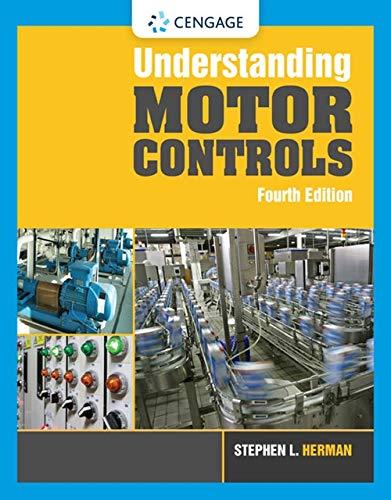The Diamond Ring Solution. The processing chip on the computer that controls the navigation equipment on your spacecraft is overheating. Unless you fix the problem, the chip will be damaged and the navigation system will shut down. You open the panel and find that the small copper disk that was supposed to bridge the gap between the smooth top of the chip and the cooling plate is missing, leaving a 2.2 mm gap between them. In this configuration, the heat cannot escape the chip at the required rate. You notice by the thin smudge of thermal grease (a highly thermally conductive material used to promote good thermal contact between surfaces) that the missing copper disk was 2.2 mm thick and had a diameter of 1.3 cm. You know that the chip is designed to run below 75 °C, and the copper cooling plate is held at a constant 5.0 °C. (a) What was the rate of heat flow from the chip to the copper plate when the original copper disk was in place and the chip was at its maximum operating temperature? b) The only material that you have available
The Diamond Ring Solution. The processing chip on the computer that controls the navigation equipment on your spacecraft is overheating. Unless you fix the problem, the chip will be damaged and the navigation system will shut down. You open the panel and find that the small copper disk that was supposed to bridge the gap between the smooth top of the chip and the cooling plate is missing, leaving a 2.2 mm gap between them. In this configuration, the heat cannot escape the chip at the required rate. You notice by the thin smudge of thermal grease (a highly thermally conductive material used to promote good thermal contact between surfaces) that the missing copper disk was 2.2 mm thick and had a diameter of 1.3 cm. You know that the chip is designed to run below 75 °C, and the copper cooling plate is held at a constant 5.0 °C. (a) What was the rate of heat flow from the chip to the copper plate when the original copper disk was in place and the chip was at its maximum operating temperature? b) The only material that you have available
Principles of Heat Transfer (Activate Learning with these NEW titles from Engineering!)
8th Edition
ISBN:9781305387102
Author:Kreith, Frank; Manglik, Raj M.
Publisher:Kreith, Frank; Manglik, Raj M.
Chapter8: Natural Convection
Section: Chapter Questions
Problem 8.26P
Related questions
Question

Transcribed Image Text:The Diamond Ring Solution. The processing
chip on the computer that controls the
navigation equipment on your spacecraft is
overheating. Unless you fix the problem, the
chip will be damaged and the navigation
system will shut down. You open the panel
and find that the small copper disk that was
supposed to bridge the gap between the
smooth top of the chip and the cooling plate
is missing, leaving a 2.2 mm gap between
them. In this configuration, the heat cannot
escape the chip at the required rate. You
notice by the thin smudge of thermal grease
(a highly thermally conductive material used
to promote good thermal contact between
surfaces) that the missing copper disk was
2.2 mm thick and had a diameter of 1.3 cm.
You know that the chip is designed to run
below 75 °C, and the copper cooling plate is
held at a constant 5.0 °C.
(a) What was the rate of heat flow from the
chip to the copper plate when the original
copper disk was in place and the chip was at
its maximum operating temperature?
The only material that you have available

Transcribed Image Text:on board to bridge the gap between the chip
and copper plate is lead. If the cross-
sectional area of the lead piece you plan to
wedge into the gap is 1.7 cm², what is the
rate of heat flow from the chip to the copper
plate? Does it match the value calculated in
part (a)?
(c) While brainstorming for other possible
solutions to your problem, you happen to
glance down at the engagement ring on your
finger: a large, glittering diamond. The top
and bottom surfaces are flat and nearly
rectangular (L = 0.90 cm and W = 0.50 cm),
and the thickness looks to be about 2.2 mm,
just right to bridge the gap. You pry the
diamond out of its holder and press it into
the gap. What is the rate of heat flow now?
Good enough?
(a) Number
(b) Number i
&
i
Number
i
Units
Units
Units
<>
<>
<>
Expert Solution
This question has been solved!
Explore an expertly crafted, step-by-step solution for a thorough understanding of key concepts.
Step by step
Solved in 5 steps

Knowledge Booster
Learn more about
Need a deep-dive on the concept behind this application? Look no further. Learn more about this topic, mechanical-engineering and related others by exploring similar questions and additional content below.Recommended textbooks for you

Principles of Heat Transfer (Activate Learning wi…
Mechanical Engineering
ISBN:
9781305387102
Author:
Kreith, Frank; Manglik, Raj M.
Publisher:
Cengage Learning

Electrical Transformers and Rotating Machines
Mechanical Engineering
ISBN:
9781305494817
Author:
Stephen L. Herman
Publisher:
Cengage Learning

Understanding Motor Controls
Mechanical Engineering
ISBN:
9781337798686
Author:
Stephen L. Herman
Publisher:
Delmar Cengage Learning

Principles of Heat Transfer (Activate Learning wi…
Mechanical Engineering
ISBN:
9781305387102
Author:
Kreith, Frank; Manglik, Raj M.
Publisher:
Cengage Learning

Electrical Transformers and Rotating Machines
Mechanical Engineering
ISBN:
9781305494817
Author:
Stephen L. Herman
Publisher:
Cengage Learning

Understanding Motor Controls
Mechanical Engineering
ISBN:
9781337798686
Author:
Stephen L. Herman
Publisher:
Delmar Cengage Learning